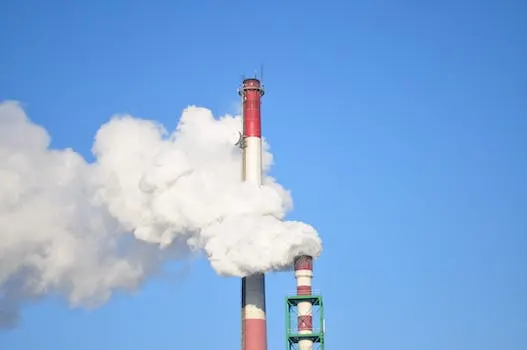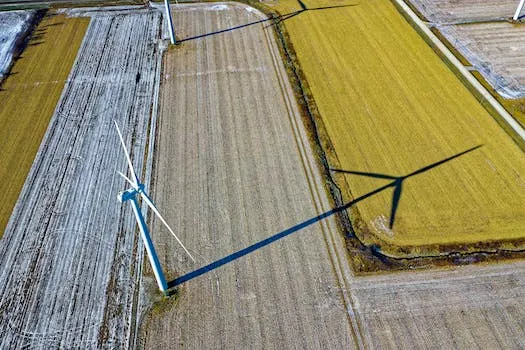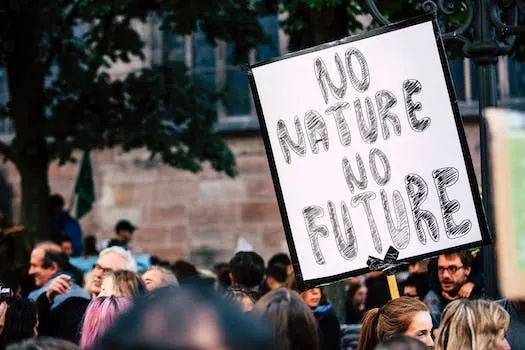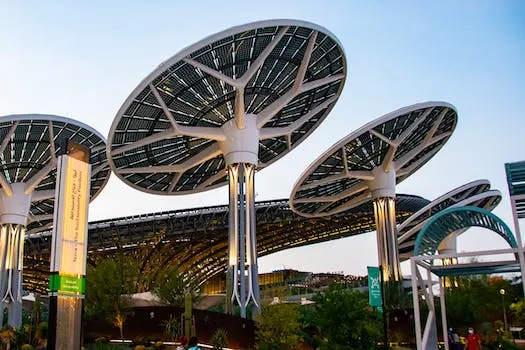
What Can We Do to Address Environmental Risk Factors?
The science is clear: to avoid the worst impacts of climate change, emissions need to be reduced by almost half by 2030 and reach net-zero by 2050. To achieve this goal, we must take action now. One way to reduce environmental risk factors is through agriculture, forestry, and other land use. These activities can provide large-scale emissions reductions and also remove and store carbon dioxide at scale. Additionally, investing in renewable energy sources is a priority for many Americans; a recent survey found that 69% of people believe developing renewable energy sources should be the more important energy priority for the country.
Lower-income and marginalized populations are particularly vulnerable when it comes to environmental risk factors as they lack the resources to adequately prepare or cope with them. To help address this issue, companies must revamp their energy policy in order to manage their environmental and climate impacts more effectively. This article outlines a five-step framework that companies can use as a guide when creating an effective energy policy:
Step one is reducing greenhouse gas emissions responsible for climate change; this means using more clean energy – such as solar or wind power – while also using that clean energy more efficiently. Step two involves investing in renewable energies such as solar panels or wind turbines which will help reduce our reliance on fossil fuels while providing us with clean electricity sources that don’t emit any carbon dioxide into the atmosphere. Step three focuses on improving efficiency standards so that we can get more out of our existing resources without having to increase consumption levels significantly; this could include things like better insulation or LED lighting systems which require less electricity than traditional bulbs do but still provide adequate lighting levels indoors or outdoors. Finally steps four and five involve educating people about how they can make small changes in their daily lives which will have big impacts on reducing environmental risk factors over time; these could include things like switching from plastic bags at grocery stores to reusable ones made from natural materials like cotton or hemp instead!
By taking these five steps outlined above, companies can make significant progress towards addressing environmental risk factors while also helping lower-income populations who are disproportionately affected by them due to lack of resources available for preparation or coping mechanisms available otherwise!
Reducing Our Carbon Emissions
Reducing our carbon emissions is one of the most effective ways to address environmental risk factors. We can start by reconsidering how much and how often we travel, and opting for cleaner energy sources such as wind or solar power. This switch from oil, gas or coal-powered energy to renewable sources can reduce our carbon footprint by up to 1.5 tons per year. Improving energy efficiency not only reduces greenhouse gas emissions into the atmosphere, but it also has a positive effect on a corporation's bottom line. Hydropower, biomass, wind, geothermal and solar energy are all reliable options for transitioning away from a fossil fuel economy. Limiting global warming will require major transitions in the energy sector that involve substantial reductions in fossil fuel use and increased investment in renewable sources of energy such as wind or solar power. By increasing efficiency in the home and reducing our reliance on cars for transportation we can make significant progress towards reducing our carbon emissions and addressing environmental risk factors.
Investing in Renewable Energy Sources
Investing in renewable energy sources is an important step to reducing environmental risk factors. Renewable energy sources are those that can be replenished quickly or that are nondepletable, such as solar, hydropower, wind, geothermal and biomass. These resources provide energy without the planet-warming effects of fossil fuels and have a variety of benefits associated with them. Wind power is one example of a clean and renewable energy source; it harnesses the mechanical power from the wind to spin a generator and create electricity. Solar energy is another popular form of renewable energy which uses photovoltaic cells to convert sunlight into electricity. Geothermal power utilizes heat from within the earth’s core to generate electricity while hydropower captures kinetic energy from falling water for use in turbines or other generators. Biomass is also considered a renewable resource as it uses organic materials such as wood chips or agricultural waste for fuel production.
The advantages of investing in these renewable sources are numerous; they provide increased security by diversifying our current reliance on fossil fuels, improved access to reliable electricity for remote areas, social and economic development opportunities through job creation and cost savings over time due to reduced dependence on imported fuel sources. Additionally, these resources offer environmental benefits by reducing greenhouse gas emissions which contribute significantly to global warming trends seen today.
Overall investing in renewable energies can help reduce environmental risk factors while providing long-term economic benefits at the same time – making it an attractive option for both individuals looking for ways to reduce their carbon footprint as well as businesses looking for cost-effective solutions that will benefit their bottom line over time. With more research being conducted into new technologies related to renewables every day there has never been a better time than now to start exploring how you can incorporate these sustainable options into your lifestyle or business operations today!
Reducing Our Waste
Reducing our waste is an essential step in addressing environmental risk factors. We can do this by reducing the amount of packaging we use, recycling, composting, and using reusable bags for shopping. By cutting down on the amount of waste we produce, we can help to reduce pollutants in our environment. One way to reduce your own waste is to purchase products that come with less packaging or are packaged in materials that can be recycled. Composting also helps to reduce waste as it increases water retention and decreases erosion while keeping organic materials out of landfills. Grocery stores have the opportunity to reduce plastic waste by eliminating plastic packaging altogether and replacing it with more sustainable options such as paper bags or reusable containers. The end result of producing less waste is money saved, resources conserved, pollution reduced, and landfill space saved. To achieve zero-waste operations globally requires support for new forms of packaging such as biodegradable plastics or compostable materials which are becoming increasingly available on the market today. Additionally, reducing single-use plastic bag consumption will help us become more reliant on reusable alternatives like cloth bags which are both cost effective and environmentally friendly solutions for carrying groceries home from the store.
Conservation Efforts
conservation efforts are essential to reducing environmental risk factors and ensuring our environment remains healthy and sustainable. This includes preserving natural habitats, protecting endangered species, and reducing water and air pollution. Conservation is the act of protecting Earth's natural resources for current and future generations, which includes sustainably managing forests, combating desertification, halting land degradation, halting biodiversity loss, certifying farms that protect natural ecosystems and endangered species without polluting water bodies or hunting wild animals.
In addition to conservation efforts there are other ways to address environmental risks such as conserving water and energy resources; minimizing greenhouse gases; re-using solid waste; getting a handle on pesticide risks; Protecting human rights by taking stronger actions on climate change; and addressing the global environmental emergency by preserving biological diversity. Human activity is driving much of this destruction so it is important that we take steps now to reduce our impact on the environment in order to ensure a healthy planet for future generations.
Educating Ourselves and Others
Educating ourselves and others about environmental risk factors is a key step in addressing the global challenge of climate change. By learning about the effects of climate change, the importance of reducing our carbon emissions, and the benefits of investing in renewable energy sources, we can create an informed and engaged public that is more likely to take action. Knowledge regarding this phenomenon helps young people to understand their role in protecting our planet for future generations. Solutions to climate change require us to think beyond traditional approaches and consider innovative solutions such as green infrastructure or nature-based solutions. Walmart has committed to science-based targets for emissions reduction, including achieving zero emissions in our operations by 2040 and helping customers reduce their own emissions by 1 gigaton by 2030. To achieve these goals, we must reduce global greenhouse gas emissions by almost half before 2030 and reach net-zero before 2050. While adaptation is important to reduce the negative impacts from climate change, it cannot replace mitigation efforts; however, it can help build climate resilience when combined with other adaptation options. Educating ourselves on these issues will help us make informed decisions that will benefit both current and future generations alike.
Conclusion
In conclusion, addressing environmental risk factors is essential for a healthy and sustainable future. We can all make a difference by reducing our carbon emissions, investing in renewable energy sources, reducing our waste, and educating ourselves and others. Companies like Walmart have committed to science-based targets for emissions reduction to help fight climate change. Additionally, investments in the environment mean not only cutting emissions but also creating good jobs and improving the quality of life for everyone. It is up to us to take action now so that future generations can enjoy a safe and healthy environment.










